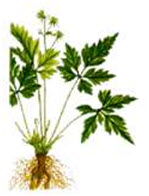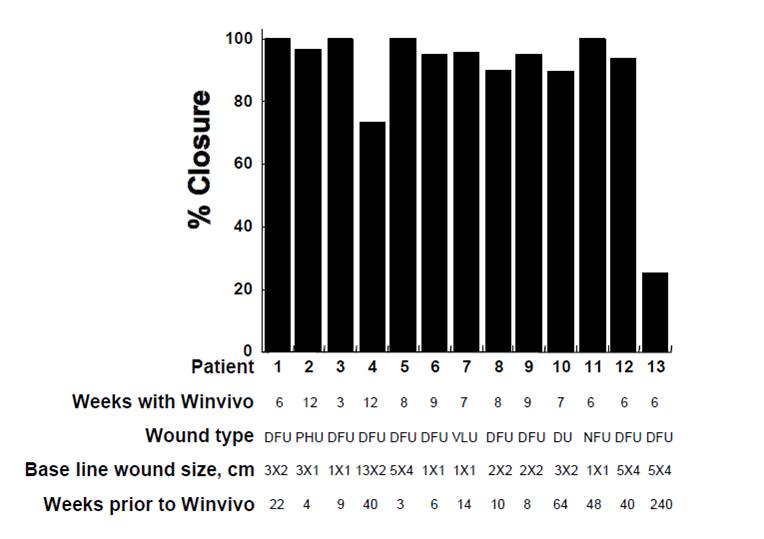Coptis root (Coptis chinensis Franch.)
 The dried rhizome of Coptis chinensis Franch is used in the preparation of the WINVIVO Wound Ointment.
The dried rhizome of Coptis chinensis Franch is used in the preparation of the WINVIVO Wound Ointment.
Traditional Uses of Coptis Root (Coptis chinensis Franch.)
- The first record for medical use of coptis has been appeared in the Chinese medical literature of The Divine Farmer’s Materia Medica (25 A.D. to 220 A.D).
- In Traditional Chinese Medicine, this botanical is used for clearing heat and draining dampness, draining fire and resolving fire toxicity, stopping bleeding, and clearing heat topically.
Modern Research - Coptis Root (Coptis chinensis Franch.)
- Coptis is reported with the following pharmacological properties: antimicrobial, antiviral, antifungal, and anti-inflammatory.
- It has a broad spectrum of antibiotic effects against a wide range of bacteria including Bacillus dysenteriac, Mycobacterium tuberculosis, Salmonella typhi, E. coli, Pseudomonas aeruginosa, Staphylococcus aureus, etc.
- Coptis Root's main active compound berberine is most effective for gastrointestinal infection, but not for systemic infection since it has poor absorption by the intestines and a short half-life.
- It has also been reported that a 15% decoction of this botanical is effective against numerous pathogenic fungi and dermatophytes; and has an inhibitory effect aginst influenza and hepatitis viruses.
Antimicrobial properties of berberines alkaloids in Coptis chinensis Franch by microcalorimetry.
J Biochem Biophys Methods. 2008 Apr 24; 70(6):845-9. Epub 2007 Aug 9.
Yan D, Jin C, Xiao XH, Dong XP.
Institute of Chinese Medicine, 302 Hospital of People's Liberation Army, Beijing, 100039, PR China.
Abstract
The growth thermogenic curves of Escherichia coli (E. coli) affected by berberine, coptisine and palmatine were determined quantitatively by microcalorimetry. The power-time curves of E. coli with and without the three berberines alkaloids (BA) were acquired, meanwhile the extent and duration of inhibitory effects on the metabolism were evaluated by growth rate constant (k), half- inhibitory ratio (IC50), peak time of maximum heat-output power (tp), total heat-production (Qt) and so on. The inhibitory effects of BA on E. coli revealed that the sequence of their antimicrobial activity was berberine > coptisine > palmatine. The functional groups methylenedioxy at C2 and C3 on phenyl ring improve antimicrobial activity more remarkably than methoxyl at C2 and C3 on phenyl ring. However, the antimicrobial activity does not vary significantly with methylenedioxy or methoxyl at C9 and C10 on phenyl ring.
Advance of studies on anti-atherosclerosis mechanism of berberine.
Chin J Integr Med. 2010 Apr; 16(2):188-92. Epub 2010 May 16.
Wu M, Wang J, Liu LT.
Guang' anmen Hospital, China Academy of Chinese Medical Sciences, Beijing (100053), China.
Abstract
Coptis Chinensis is a traditional Chinese medicine herb that has the effect of clearing heat and drying dampness, purging fire to eliminate toxin. Berberine is the main alkaloid of Coptis Chinensis, and, recent researches showed that berberine had the effect of anti-atherosclerosis. This paper reviewed the anti-atherosclerosis mechanism of berberine, which may be related to regulating lipids, anti-inflammation, decompression, reducing blood sugar, and inhibiting vascular smooth muscle cell proliferation.
The effect of coptis chinensis on the signaling network in the squamous carcinoma cells.
Front Biosci (Elite Ed). 2011 Jan 1;3:326-40.
Wang H, Zhang F, Ye F, Ma Y, Zhang DY.
Shanghai Renji Hospital, Shanghai Jiaotong University School of Medicine, Shanghai, China.
Abstract
The effects of Coptis chinensis on the behavior of squamous cell carcinoma have not yet been established. We examined the anticancer activity of Coptis chinensis on human squamous carcinoma cells, both in vitro and in xenografted nude mice, and applied Pathway Array Technology to understand possible involvement of signaling pathways in Coptis Chinensis induced tumor cells inhibition as well. Following Coptis chinensis treatment, a time-dependent reduction in proliferation was observed in both cell lines and NCR/NU mice. Coptis chinensis has a wide effect on cell signaling, including cell cycle regulation (Cdk6, Cdk4, cyclin B1, cyclin E, cyclin D1, p27), cell adhesion (E-cadherin, osteopontin), differentiation, apoptosis(p-Stat3, p53, BRCA1), cytoskeleton (p-PKC α/β II, Vimentin, p-PKCα), MAPK signaling (raf-1, ERK1/2, p-p38, p-ERK), and the phosphatidylinositol 3-kinase signaling pathway (p-Akt, Akt, p-PTEN). In our conclusions, Coptis chinensis may be a novel therapeutic drug for squamous cell carcinoma.
WINVIVO Wound Ointment:
Multi-Functional Botanical Therapy
Clinical Studies
- Difficult-to-Heal Wounds
Clinical Case Reports
- Cases #1A-6A
- Cases #1B-8B
- Cases #1C-7C
- Cases #1D-4D
- Cases #1E-2E
- Cases #1F-6F
- Cases #1G-5G
- Case #1H
- Case Series #1I
- Case Series #1J
Privacy Policy | Disclaimer | Return Policy | Contact Us
© 2009-2021 WinVivo Corporation All Rights Reserved




